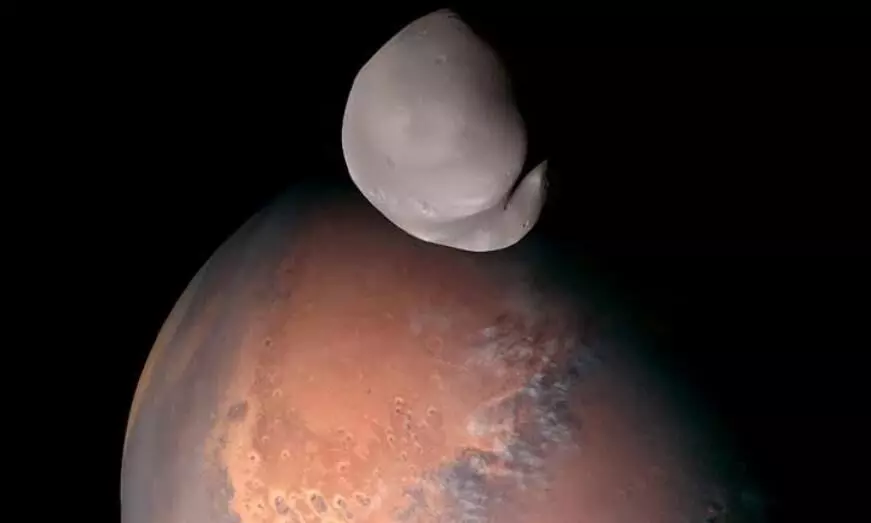
UAE's Hope takes 1st photos of Mars's little-known moon Deimos
text_fieldsAbu Dhabi: Hope, the United Arab Emirates space probe, has sent high-resolution images of Mars's moon Deimos. The said pictures were the first ever taken of the little-known moon of Mars, IANS reported.
The images, which capture the far side of the 12.4-km-wide Deimos, were taken during a fly-by performed on March 10, Nature reported.
Instead of the carbon-rich rock often found in asteroids, the scientists found a flat spectrum which is suggestive of the type of material seen on Mars' surface. This shows that Deimos was formed from the same material as the planet.
"If there were carbon or organics, we would see spikes in specific wavelengths," Emirates Mars Mission (EMM) science lead Hessa Al Matroushi was quoted as saying.
Similar to the Earth's Moon, Deimos is tidally locked to Mars.
This means that always the same side of the moonlet is visible to any observations from a low Mars orbit or the planet's surface.
However, Hope's unusually high and elongated orbit, reaching more than 40,000 km above Mars' surface at its highest point, enabled it to observe Deimos from above and to image its farside, Al Matroushi explained.
"Mars was in the background -- and that was just mind-blowing, honestly," she added. Al Matroushi shared the results at the recent European Geosciences Union meeting held in Vienna.
The 1.35-tonne, $200-million Hope spacecraft, formally known as the EMM, entered Mars orbit on February 9, 2021.
It has since then been studying the relationship between the upper layer and lower regions of the Martian atmosphere. It has given the science community full access to a holistic view of the planet's atmosphere at different times of the day, through different seasons.
But once that phase was concluded with propellant to spare, mission control fired the onboard thrusters in a manoeuvre that allowed the spacecraft to intersect with Deimos' orbit multiple times, the report said.
Al Matroushi said, "We don't want to get a one-time observation of Deimos. We knew we wanted more."


















